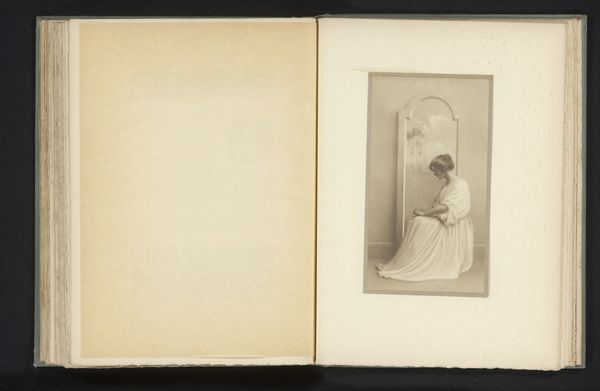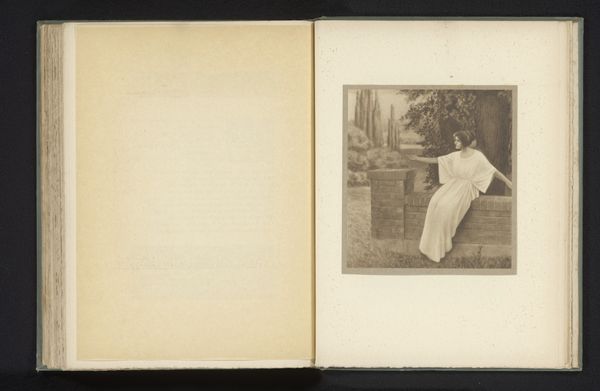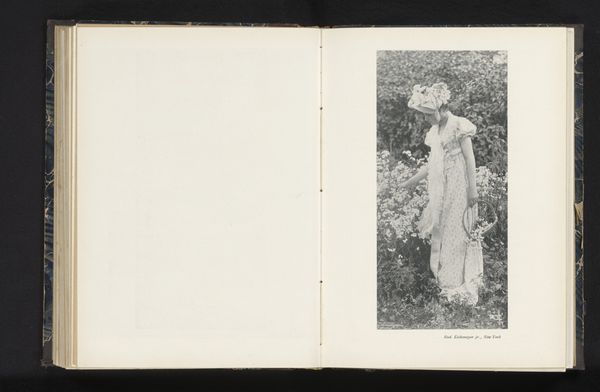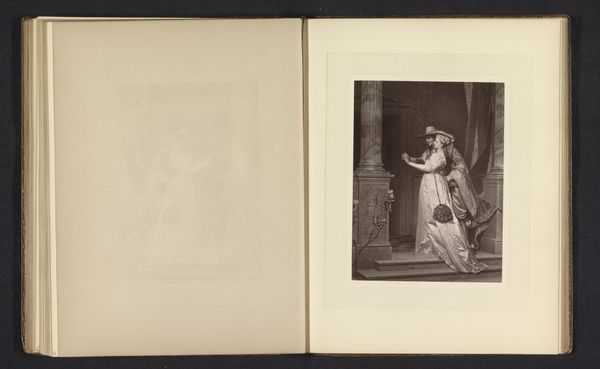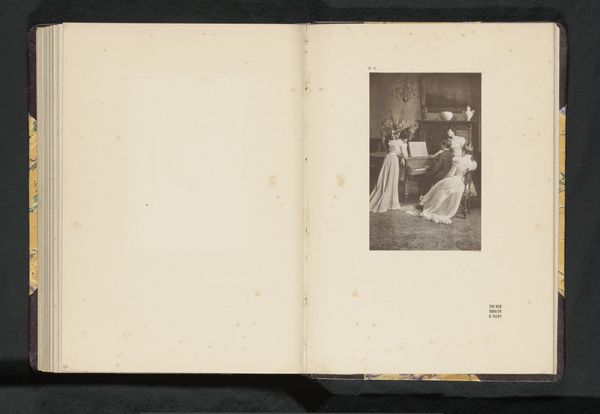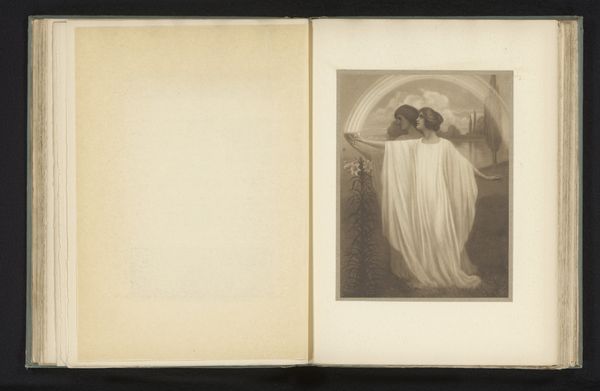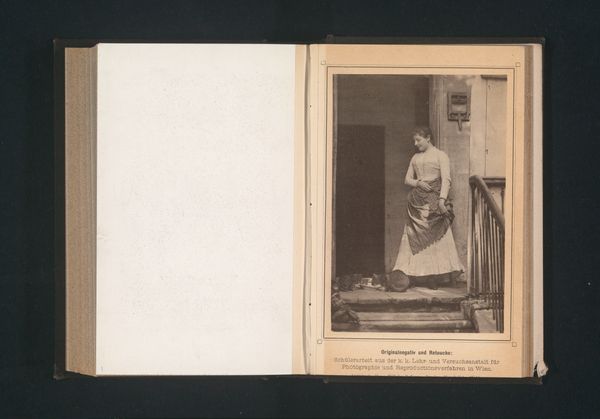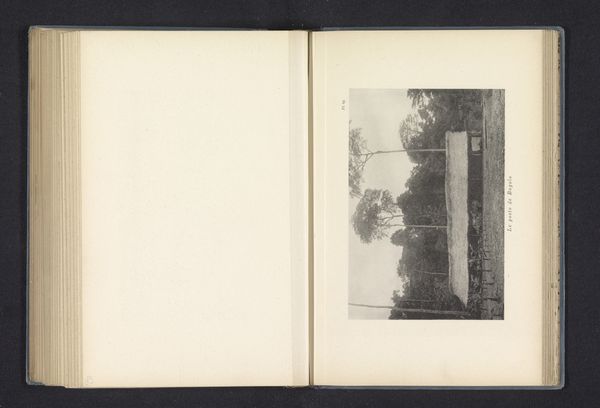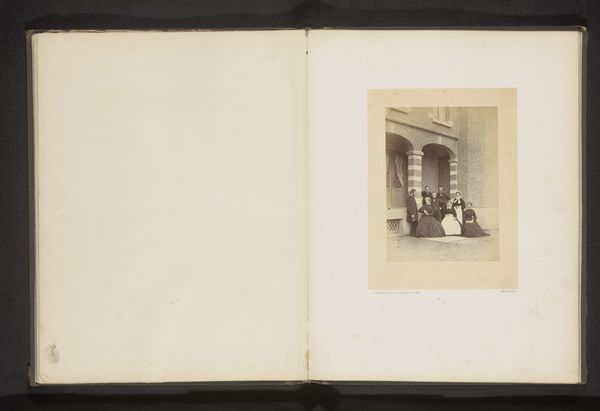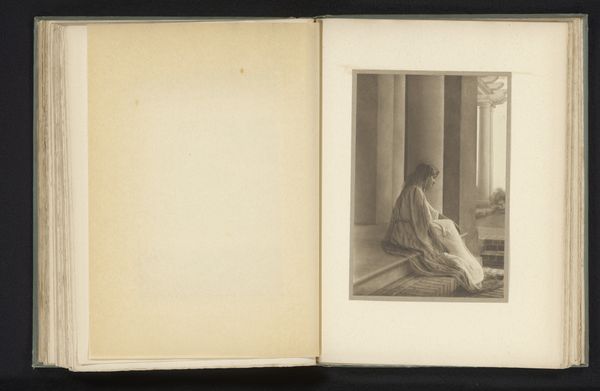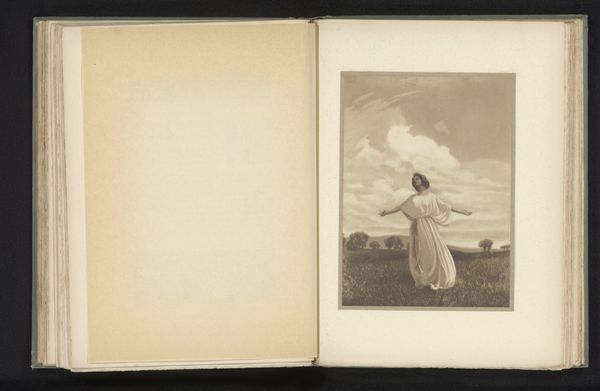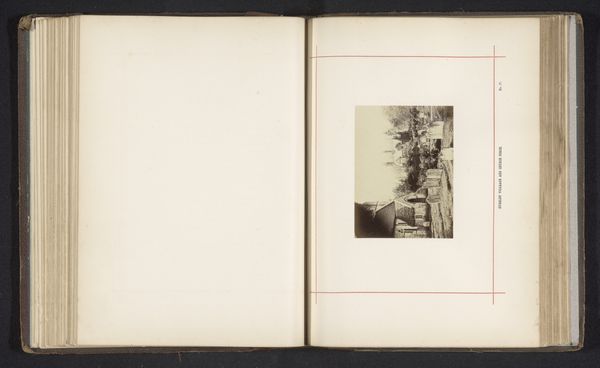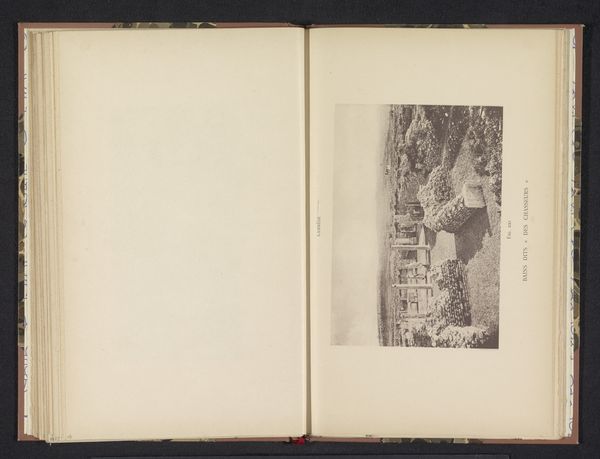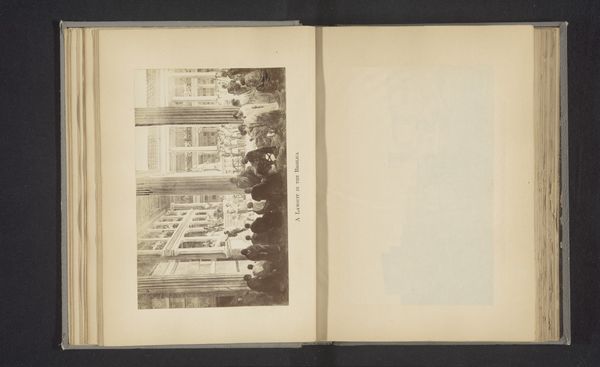
photography, gelatin-silver-print
#
landscape
#
classical-realism
#
photography
#
gelatin-silver-print
Dimensions: height 163 mm, width 125 mm
Copyright: Rijks Museum: Open Domain
Curator: I find myself drawn to the subdued elegance in this gelatin silver print, a photograph titled "Vrouw met lauriertak bij een tempel" - "Woman with laurel branch at a temple," crafted before 1916 by Adelaide Hanscom Leeson. Editor: Immediately, I see echoes of classical statuary in the draped figure. The photographic gray evokes marble; it's striking how Leeson connects photography with the symbolic language of ancient monuments and idealized female forms. Curator: Precisely! There's a calculated ambiguity present. While stylistically adopting Classical Realism and placing the figure within an Arcadian landscape, it's equally about the cultural construct of femininity during the turn of the century, one filtered through this imagined ancient world. Consider how the laurel, an ancient symbol, signifies both triumph and moral excellence, often associated with Apollo and the arts. How does this visual language then speak to the identity of the modern woman represented here? Editor: That connection to Apollo is key. The temple isn’t simply architectural; it embodies a dedication to beauty and reason, principles celebrated in ancient societies. Placing the woman there, framed within classical ideals, she transcends a singular identity. This echoes notions of idealized womanhood prevalent in Victorian art but also raises intriguing questions about gendered roles within that era. She’s holding what looks like a bare branch; perhaps hinting at both promise and fragility, life and mortality. Curator: We cannot separate the woman in question from Leeson herself. As a notable figure in the Photo-Secession movement, she herself disrupted many social conventions as a woman artist and queer woman at that, imbuing a distinctly intersectional narrative of resistance and self-expression onto the artistic scene. Thus the symbol of the laurel carries extra weight, connoting her personal victories, in conjunction to that of the classical connotations that speak to power, victory, and even eternity. Editor: So the bare laurel might suggest resilience more than fragility—a starkness in the face of classical expectation and potential loss. It’s as though she, as a modern woman, stands at the threshold, acknowledging these enduring symbols yet also claiming autonomy over their meaning in her own life. There is indeed a quiet strength there. Curator: Absolutely, a photographic performance where identity and symbol, biography and history converge. Editor: Indeed, leaving the viewer pondering the enduring power of imagery in conveying identity.
Comments
No comments
Be the first to comment and join the conversation on the ultimate creative platform.
